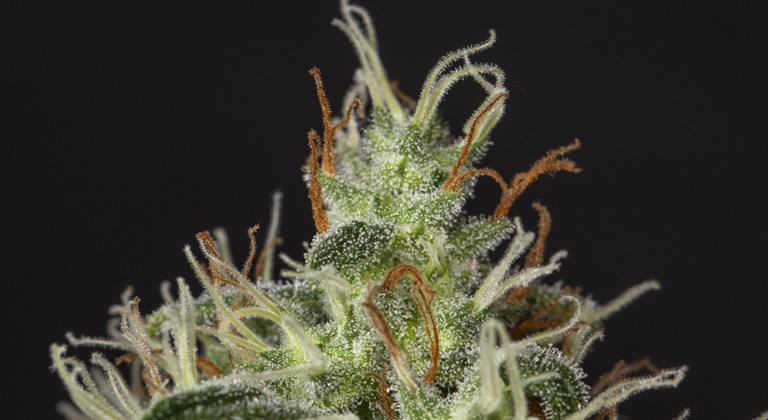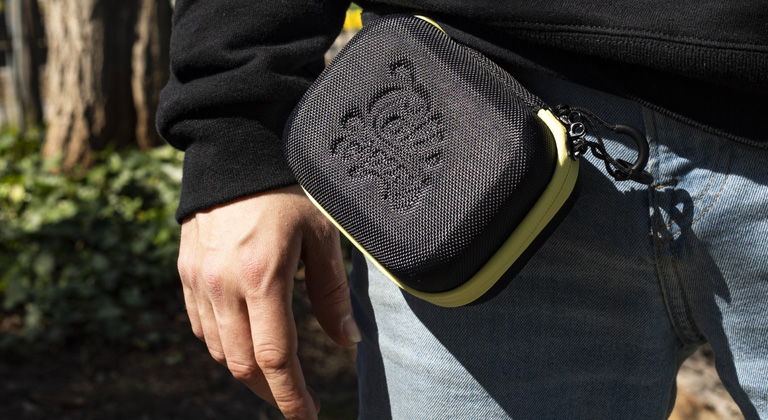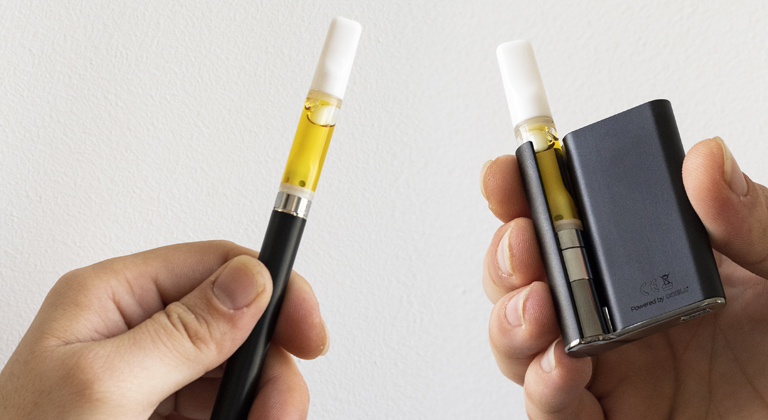If you’ve had experience with cannabis, we’re almost certain it’s been with some sort of Haze strain – does an incensed aroma sound familiar to you? If so, it was probably a Haze strain.
What are Haze strains?
The Original Haze strain was created in the 70s in California. A potent sativa with a long flowering period (as was common with this type of landrace strain), and a potent psychoactive effect thanks to its high THC levels, low CBD levels and aromatic profile. This strain was popular among those looking for a strong, energetic and creative effect.
However, its potent effect isn’t the only thing that made this strain one of the pillars upon which the modern cannabis hybrid industry is built. There’s a determining factor that made it one of the favorites; its aroma and flavor, which is to say, its terpene profile. A citric aroma and flavor, woody and incensed with fruity hints, with a touch of what many people describe as a “churchy” smell.
Main Haze Characteristics
The high and aroma produced by Haze strains were highly appreciated, although their long flowering period wasn’t quite as sought-after. These strains originally took up to 6 months to be ready to harvest, which wasn’t an issue in their original tropical climate, but for growers in colder areas it was quite the inconvenience.
This is why (and also due to the needs of indoor growers and producers), over the last few decades, a lot of breeding work has gone into shortening this flowering period, while conserving THC levels and its unmistakable aroma and flavour.
Haze plants are generally quite tall, with large internodes that develop long buds with an incense, lemon aroma, which produce a strong mental effect. At the beginning, as we were saying, these strains had long flowering periods of around 16 weeks, but thanks to work put in by breeders and hybridization, nowadays we can enjoy Haze strains with intense aromas and effects, with flowering periods of up to 10, 11 and in some cases down to 8 – 9 weeks, such as Gipsy Haze.
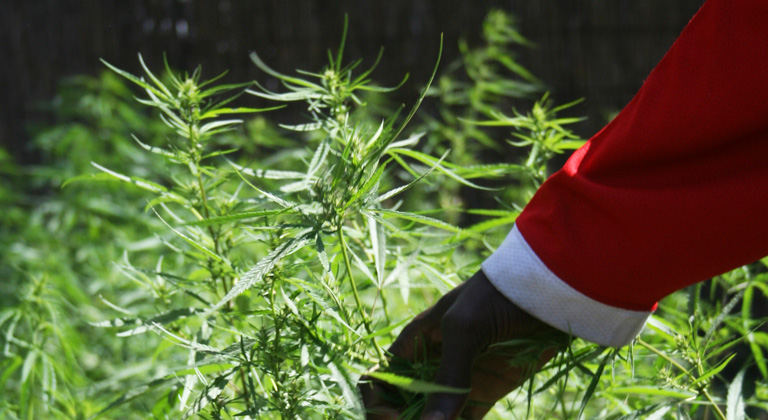
Where do Haze Strains Come From?
During the 70s, a movement was started in California that would cement the bases for the current modern cannabis industry that we all know. Californian cannabis growers went one step further, from growing strains to breeding and selecting them. Up until then, most cannabis strains grown were obtained from flowers from Mexico, Columbia etc.
Everything changed when seeds started coming in from other areas of the world, like Pakistan, which had a certain characteristic that they needed; a shorter flowering period with which they could avoid the bad weather during Californian falls. From the hybridization of these indica strains, the first stable hybrids were obtained, such as the famous Skunk – changing the game forever.
The Haze Brothers
However, many people still love sativas from Mexico and Colombia, with their energetic and creative effects – this was the case of the Haze Brothers, two brothers from Santa Cruz California that decided to grow pure Sativa strains in greenhouses, selecting those which had the fastest flowering period.
It’s hard to know exactly what happened; in those times growing cannabis was still very much an underground activity that was risky business due to the prohibitionist nature of the time. This is why there’s no documented proof and the information we have nowadays is simply word of mouth from members of the cannabis community.
According to what’s said, between 1970 and 1075, these two brothers began crossing and growing Sativa strains from Thailand, Colombia, Mexico and the South of India. From their earliest and most aromatic batch, the selected strains and crossed them over generations, resulting in the strain Original Haze, a 100% sativa hybrid considered the Mother of Haze strains.
The brothers, while they managed to create an incredibly aromatic and potent strain, didn’t stabilize it – they passed the torch to the breeder Sam the Skunkman, creator of the stinkiest Skunk, who decided to take Original Haze to Holland, where he started stabilizing and hybridizing the strain.
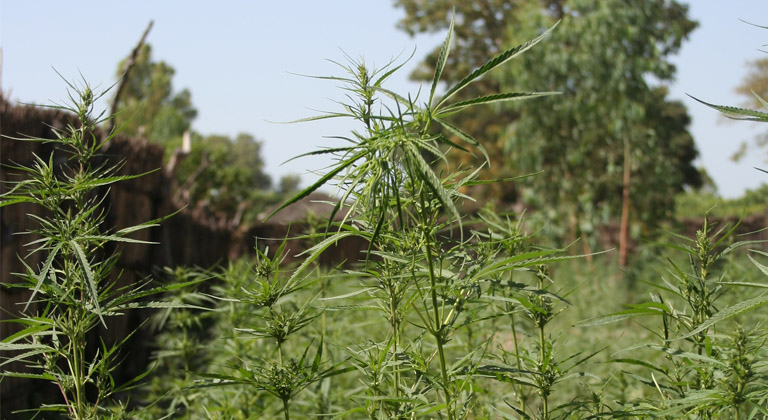
Holland, Breeding in the 80s and Neville’s Haze
Even though Sam the Skunkman received the Haze strain from the brothers in the 70s in California, he didn’t work on it much back then, as he was most likely focusing on stabilizing the Skunk, This wouldn’t happen until 1980, when he decided to move to Holland because of the criminalization ofc cannabis in the US (the war on drugs), looking for a more favorable legal scenario.
As we were saying, during is trip to Holland, he decided to bring that amazing sativa with him that the brothers from Santa Cruz had created. As the story goes, during his time at Amsterdam, the Californian breeder started to work with Neville Shoenmakers, another Australian breeder who was fascinated with the Original Haze straun, and decided to cross it with other strains such as the indica Northern Lights 5.
This breeding and selection job was the creation of Neville’s Haze, a hybrid designed to be consumed during the day, with similar traits in potency and flavor in regard to the original Haze strain.
In 1995, Nevil founded the famous seed bank Green House Seeds, along the Australian breeder Shantibaba (who is currently a Mr Nice Seedbank breeder), and they created amazing hybrids such as Super Silver Haze.
It’s also true that, once stabilized, Haze strains gave way to many other legendary strains that we know of today such as Jack Herer or Amnesia. Haze strains have turned into their own category among flavors and types of cannabis. Many consumers love this type of strain, and it’s still grown nowadays.
As we were saying above, nowadays hybrids that contain strain genes have had their flowering period drastically reduced. However, there are still strains of this kind that are more old school, which have the 6 month flowering time, such as Old Timers Haze.
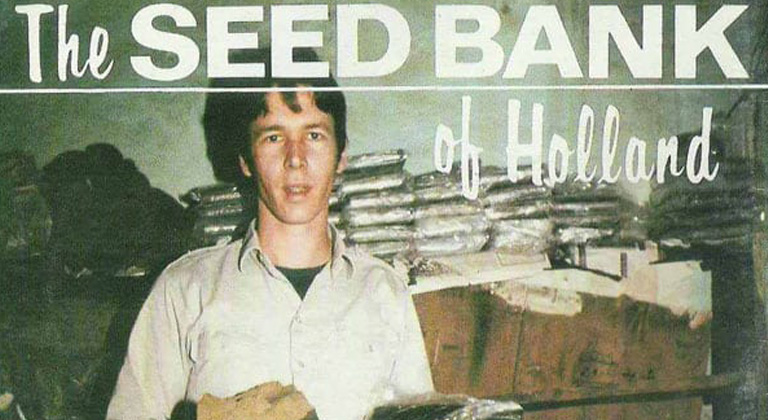
What Terpenes are Behind Haze’s Characteristic Aroma
Due to the fact that cannabis has been relegated to the underground scene due to legality issues, it used to be very hard to advance with each strain.
This is why, up until not long ago, many people thought that the terpene in charge of Haze’s aroma was Limonene, which isn’t that strange, as this type of strain has an intense citric hint, and limonene is known for its energetic effects.
However, as we’ve been able to analyse terpene profiles much easier in cannabis strains, we’ve discovered that, although Haze contains a large amount of Limonene, one of the most important parts of its intense aroma appears to be Terpinolene.
We were able to test this for ourselves, when we analysed some of the most acclaimed Haze strains in order to replicate their terpene profile.
- Amnesia: the dominant terpenes in this strain are the following: terpinolene, caryophyllene, b-ocimene, myrcene, b-pinene, d-limonene, alpha-pinene, D-3 carene, d-alpha-pinene, linalool.
As you can see on the following graph, the proportion of Terpinolene found in Amnesia’s aromatic profile is much higher than others. This terpene profile works alongside the cannabinoids produced in the plant, producing a stimulating, social and creative effect. This is a strain that many choose to improve their mood.
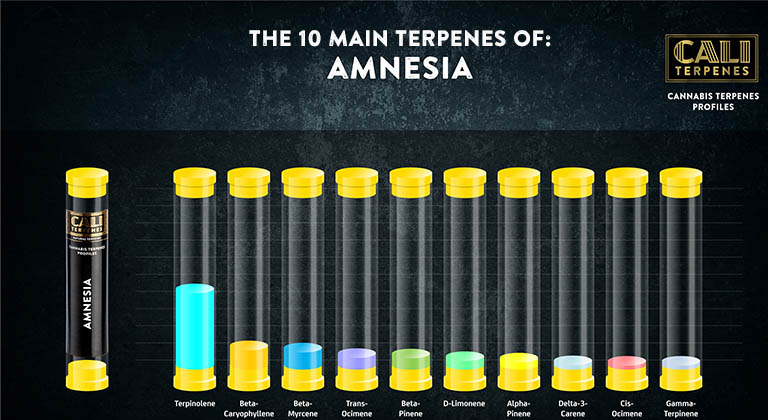
- 10K Jack: the cannabis profile 10K Jack by Cali Terpenes comes from a special US Jack Herer clone. The main terpenes in this strain are Terpinolene, Caryophyllene, Myrcene, Limonene, Beta-Pinene, d-3-Carene, L-alpha-Pinene, Alpha-Pinene, Terpinene, Nerolidol, Linalool.
Additionally, the terpene which stands out here is terpinolene, and the complete terpene profile alongside cannabinoids produces an euphoric and happy effect.
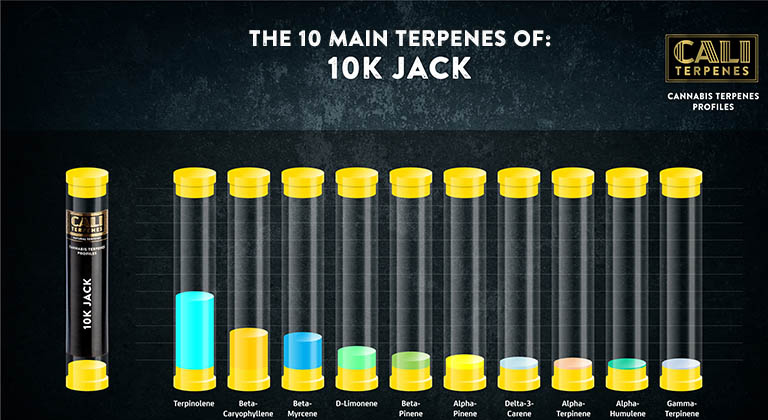
- Gipsy Haze: this strain is the result of crossing Jack Herer x Black Domina x Space Bomb. Its terpene profile mainly contains Terpinolene, Caryophyllene, Myrcene, Pinene, Limonene, Linalool, Terpinol, Cimene.
This strain contains up to 40% terpinolene, which is why it’s one of the strains with the most Haze aroma in our catalogue. The effect produced by this strain is entirely sativa, energizing and fun; ideal for social outings and daily activities.
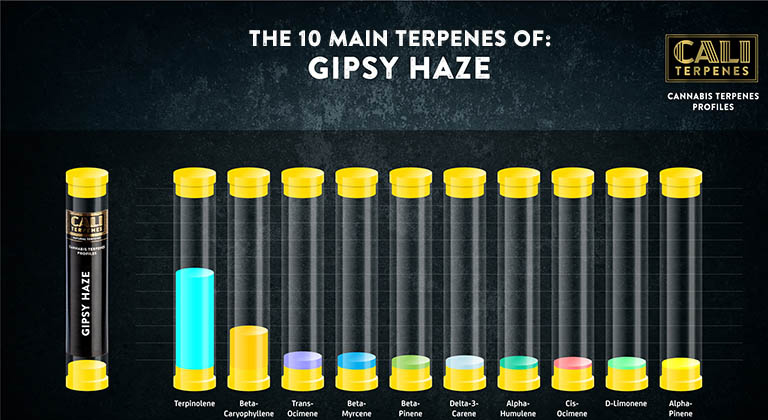
What Properties does Terpinolene Have?
According to what we’ve just mentioned, we can establish that most strains classified as Haze contain quite a lot of terpinolene in their terpene profile. However, apart from aroma and flavour, what other benefits does this terpene have?
Apart from modulating the effects produced by cannabinoids (just like the rest of terpenes found in cannabid) terpinolene also has other properties. Scientific studies point towards terpinolene acting as an anxiolytic, reducing stress and anxiety, producing anti-oxidant, anti-microbial and anti-bacterial effects.

Haze terpene profiles provide intense, complex aromas that mix citric, incense, fruity and woody tones that, when used in culinary creations, offer amazing results. Isn’t the story behind Haze a curious one? We hope this type of strain sticks around forever, we love them!
If you have any questions or would like to give us your opinion on Haze strains, leave us a comment; we’ll get back as soon as possible!
Cali Terpenes

